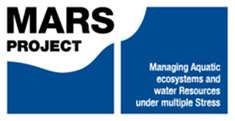What are provisioning ecosystem services?
Provisioning services encompass all the outputs of materials, nutrients and energy from an ecosystem. These might include food and water supplies, raw materials for construction and fuel, genetic resources, medicinal resources and ornamental resources.
Human use of provisioning services is therefore usually extractive, and ranges from subsistence hunting, fishing and gathering to industrial agri- and aqua-cultural systems.
What provisioning ecosystem services do freshwater ecosystems provide ?
Surface waters in rivers and lakes can provide:
- Clean water for drinking;
- Water for domestic uses such as washing and cleaning;
- Water for use in industry and agriculture, for example cooling and irrigation;
- Water flows or falls for low-carbon, renewable hydropower generation;
- Navigable rivers, canals and lakes for transport and shipping;
- Fish populations to be harvested, providing both nutritional and economic value. Fish may be caught from wild populations, farmed in aquaculture systems, or collected for ornamental display in aquariums
- Other freshwater animals, plants and algae may be harvested for food – e.g. molluscs and crustaceans – and medicinal purposes.
- Genetic resources for scientific research and development of medicines, for example the use of zebrafish in cancer research.
Groundwater present under the Earth’s surface and abstracted from underground aquifers through pumps and wells can provide water for drinking, domestic use, agriculture and industry.
Freshwater provisioning services are not only limited to lakes and rivers.
- Riparian zones along river banks can provide woodland for firewood and edible plants.
- Floodplains and wetlands support edible plants and animals which may be harvested, for example reeds, herbs and waterfowl.
- Wetlands are often sources of valuable biofuels for energy production and peat for horticulture, and provide grazing, silage and hay for dairy and beef cattle.
How do ecosystem services relate to freshwater ecosystem management?
An ecosystem service approach has the potential to strengthen freshwater management which aims to coordinate the conservation, management and sustainable development of water, land and resources across entire river basins.
Such integrated approaches are designed to maximise the social and economic outputs of freshwater ecosystems whilst preserving and restoring their ecological status. By explicitly linking ecological status with human benefits, the ecosystem service approach offers the potential for ecosystem health and functioning to be better valued within environmental policy making and management.
What are the policy and management challenges for valuing provisioning ecosystem services?
The extractive use of provisioning ecosystem services means that there are trade-offs between their use and the maintenance of healthy and diverse freshwater ecosystems, which have ‘good ecological status’ as measured in the European Union Water Framework Directive.
Maintaining sufficient water quantities for abstraction and use means that dams and reservoirs are often constructed where demand is high. Such structures often have negative impacts on the quantity, timing and speed of water flows downstream, can change sediment and nutrient flows throughout a river basin, and block fish migrations.
For many provisioning services, water is treated more as resource to be abstracted, channelled and stored, than as a medium for life. This means that many provisioning ‘ecosystem’ services are now significantly supported by human intervention and management, for example through the construction of dams and reservoirs, irrigation channels, and the straightening and dredging of river channels for navigation.
Over-abstraction of surface and ground waters can have negative impacts on ecosystem health and function, and cause lakes and rivers to become seasonally dry, with potentially negative impacts on human livelihoods, and reduce the provision of other ecosystem services.
Over-harvesting of wild populations of freshwater fish, animals and plants depletes their numbers and potentially their resilience and sustainability. Aquaculture can also have negative effects on the wider environment, through pollution from feed and waste and the genetic and behavioural impacts of escaped (sometimes non-native) fish on wild, breeding populations.
Further reading
Reports and publications:
CICES (2012). Common International Classification of Ecosystem Services - Report to the European Environment Agency prepared by R. Haines-Young & M. Potschin (Download report, 1.8mb)
Faneca Sanchez, M. et al. (2015). Report on the MARS scenarios of future changes in drivers and pressures with respect to Europe’s water resources. Part 4 of MARS Deliverable 2.1: Four manuscripts on the multiple stressor framework. (Download report, 15mb)
Grizzetti B., Lanzanova D., Liquete C. & A. Reynaud (2015). Cookbook for water ecosystem service assessment and valuation, JRC Science and Policy Report, European Union (Download report, 8mb)
Millenium Ecosystem Assessment (2005). Ecosystems and Human Well-being: Current State and Trends, Chapter 7 - Freshwater Ecosystem Services, Volume 1, ed. by R. Hassan, R. Scholes & N. Ash (Download report, 700kb)
Selected Freshwater blogs:
Freshwaterblog (2014). Can an ecosystem service approach strengthen river conservation? (External website)
Freshwaterblog (2015). The MARS ‘cookbook’ for assessing freshwater multiple stresses and ecosystem services (External website)
Freshwaterblog (2016). New factsheets on ecosystem services and the future of European freshwaters (External website)
Freshwaterblog (2016). An ecosystem services a pproach for freshwaters (External website)
Freshwaterblog (2016). New tool links freshwater ecological status and ecosystem services (External website)
Freshwaterblog (2017). Innovative solutions for water management and ecosystem services through the DESSIN Project (External website)



